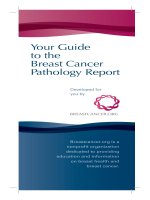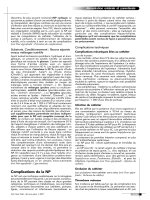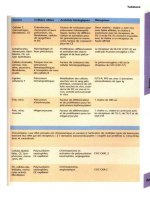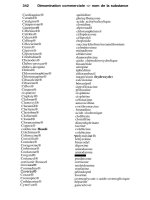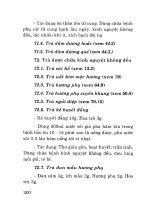Chapter 086. Breast Cancer (Part 10) pptx
Bạn đang xem bản rút gọn của tài liệu. Xem và tải ngay bản đầy đủ của tài liệu tại đây (13.31 KB, 5 trang )
Chapter 086. Breast Cancer
(Part 10)
Endocrine Therapy
Normal breast tissue is estrogen-dependent. Both primary and metastatic
breast cancer may retain this phenotype. The best means of ascertaining whether a
breast cancer is hormone-dependent is through analysis of estrogen and
progesterone receptor levels on the tumor. Tumors that are positive for the
estrogen receptor and negative for the progesterone receptor have a response rate
of ~30%. Tumors that have both receptors have a response rate approaching 70%.
If neither receptor is present, the objective response rates are <10%. Receptor
analyses provide information as to the correct ordering of endocrine therapies as
opposed to chemotherapy. Because of their lack of toxicity and because some
patients whose receptor analyses are reported as negative respond to endocrine
therapy, an endocrine treatment should be attempted in virtually every patient with
metastatic breast cancer. Potential endocrine therapies are summarized in Table
86-4. The choice of endocrine therapy is usually determined by toxicity profile
and availability. In most patients, the initial endocrine therapy should be an
aromatase inhibitor rather than tamoxifen. For the subset of women who are ER
positive but also HER-2/neu positive, response rates to aromatase inhibitors are
very substantially higher than to tamoxifen. Newer "pure" antiestrogens that are
free of agonistic effects are also in clinical trial. Cases in which tumors shrink in
response to tamoxifen withdrawal (as well as withdrawal of pharmacologic doses
of estrogens) have been reported. Endogenous estrogen formation may be blocked
by analogues of luteinizing hormone–releasing hormone in premenopausal
women. Additive endocrine therapies, including treatment with progestogens,
estrogens, and androgens, may also be tried in patients who respond to initial
endocrine therapy; the mechanism of action of these latter therapies is unknown.
Patients who respond to one endocrine therapy have at least a 50% chance of
responding to a second endocrine therapy.
It is not uncommon for patients to respond to two or three sequential
endocrine therapies; however, combination endocrine therapies do not appear to
be superior to individual agents, and combinations of chemotherapy with
endocrine therapy are not useful. The median survival of patients with metastatic
disease is approximately 2 years, and many patients, particularly older persons and
those with hormone-dependent disease, may respond to endocrine therapy for 3–5
years or longer.
Table 86-4 Endocrine Therapies for Breast Cancer
Therapy Comments
Castration For premenopausal women
Surgical
LHRH agonists
Antiestrogens
Tamoxifen Useful in pre- and postmenopausal women
"Pure" antiestrogens Responses in tamoxifen-resist
ant and
aromatase inhibitor resistant patients
Surgical adrenalectomy Rarely employed second-line choice
Aromatase inhibitors
Low toxicity; now first choice for
metastatic disease
High-dose progestogens
Common fourth-
line choice after AIs,
tamoxifen and fulvestrant
Hypophysectomy Rarely used
Additive androgens or
estrogens
Plausible fourth-
line therapies; potentially
toxic
Note: LHRH, luteinizing hormone–releasing hormone.
